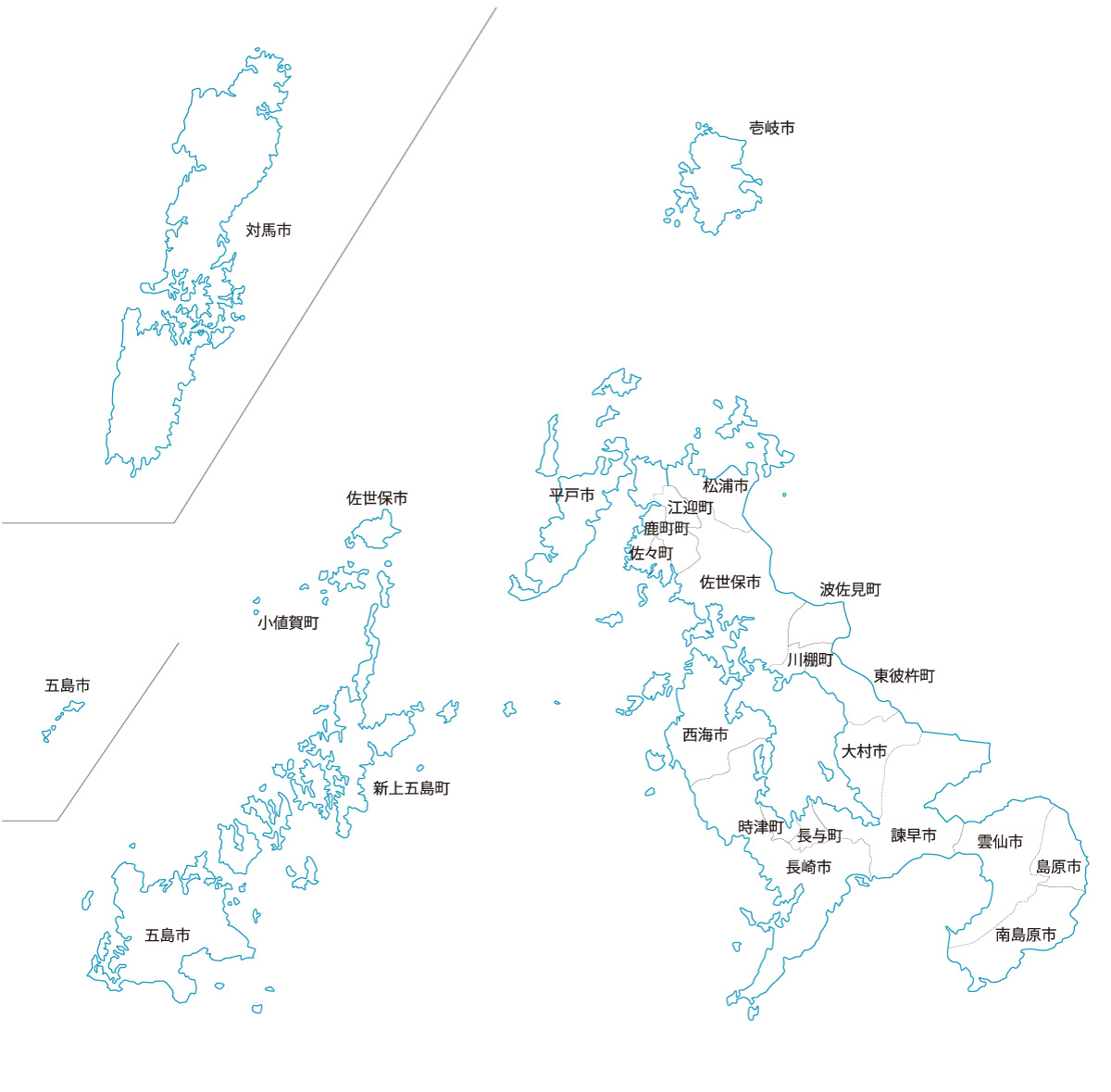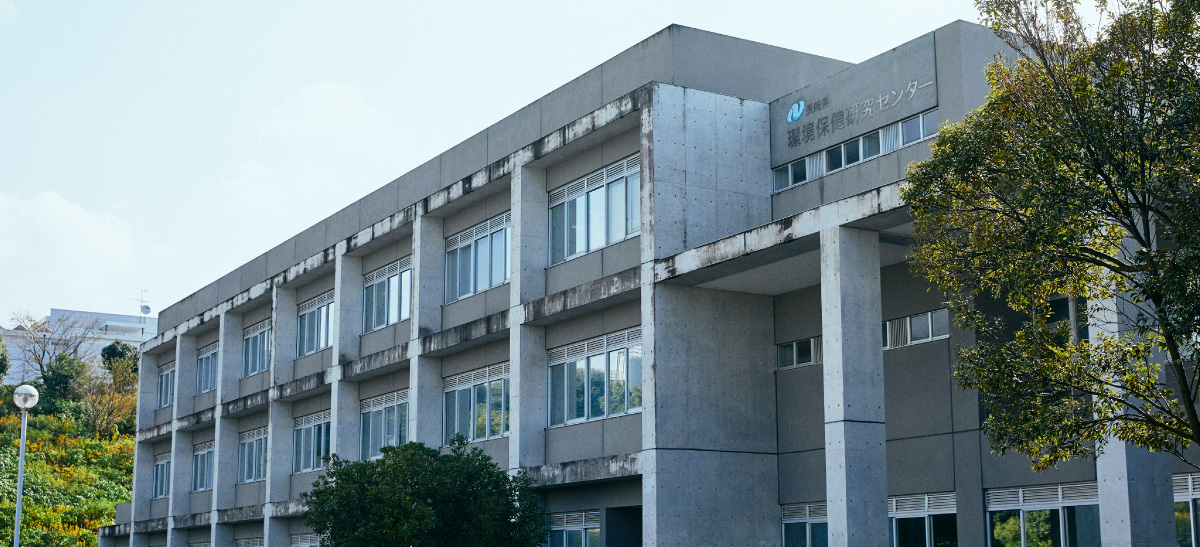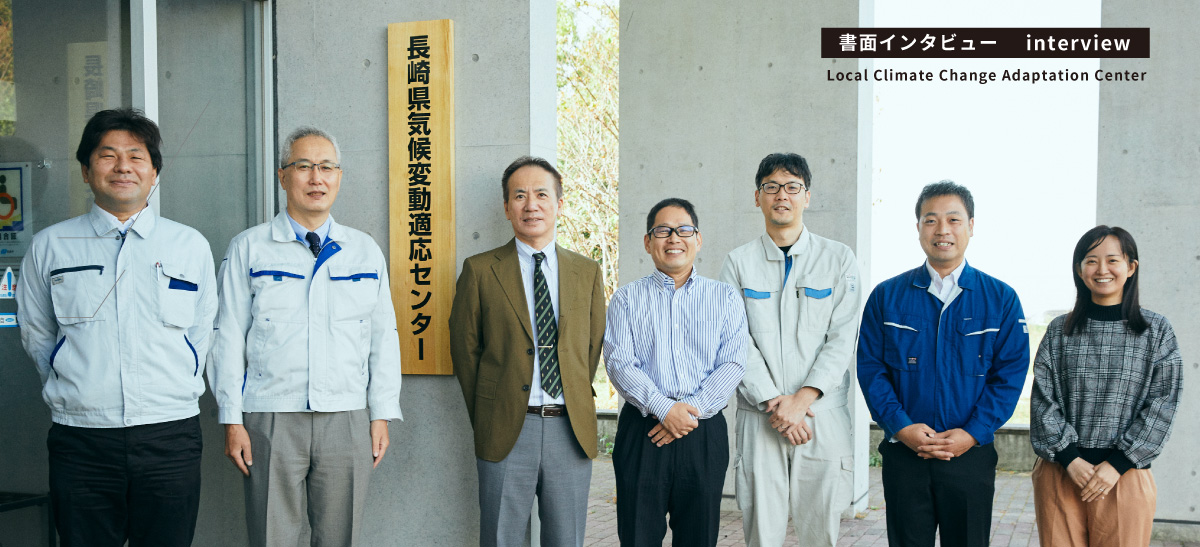Please tell us about Nagasaki Prefecture’s unique local features and characteristics, what led to the establishment of the Local Climate Change Adaptation Center, and what its organizational structure is like.
Located on the western tip of the Japanese Archipelago, Nagasaki Prefecture has complex topography comprised of many remote islands and peninsulas and is full of natural offerings and scenic views. In addition to Nagasaki being the sole gateway that Japan once had in its history to the Western culture and having two UNESCO World Heritage Sites – one being the Hidden Christian Sites in the Nagasaki Region and the other being the Sites of Japan’s Meiji Industrial Revolution – making the prefecture a popular tourist destination, it is also a major fishery prefecture, nationally ranked second in fisheries production (first being Hokkaido) and ranked first in the variety of fishes available for catching (over 300 species).
However, due to global warming in recent years, the rate of temperature increase in the prefecture is estimated to be 1.5°C per century which is above the national average. As the seawater temperature has been rising in the East China Sea, Nagasaki and the rest of prefectures in the northern Kyushu region have been experiencing major disasters almost every year caused by local cloudbursts.
In March 2021, Nagasaki Prefecture formulated its Second-Phase Global Warming (Climate Change) Action Plan in Nagasaki prefecture, describing its vision of becoming a prefecture that is ecological, adapted to the unprecedented disaster risks and other effects of climate change, carbon neutral, sound material-cycle-based, and sustainable, pursuant to which, the prefecture’s climate change adaptation measures are implemented and the Nagasaki Prefectural Climate Change Adaptation Center was established at the Nagasaki Prefectural Institute for Environmental Research and Public Health on October 1, 2021.
The Local Climate Change Adaptation Center is responsible for gathering information on extreme heat conditions and other effects of climate change specific to the prefecture, particularly concerning agriculture, forestry, and fishery, to assess the climate change impacts bearing upon the prefecture; providing feedback including analysis of collected data; improving prefectural residents’ monitoring and understanding of climate change impacts; and facilitating adaptation measures that are suitable for specific local conditions and needs.
The Center is operated by a staff of eight, including a Director, a Deputy Director, and six other members, who are all employees of the Nagasaki Prefectural Institute for Environmental Research and Public Health and have jobs at both organizations.

Please tell us about the current activities of Nagasaki’s Local Climate Change Adaptation Center as well as its future plans.
The Center’s activities this fiscal year included hosting of workshops for municipal employees in cooperation with the Ministry of the Environment, participation in environmental events, provision of seminars to local students, and other public education campaigns. As for the next fiscal year, we are planning to provide seminars, workshops, etc. that will be open to the public.
In terms of research, the Institute for Environmental Research and Public Health has been conducting a study on hyperthermia since FY 2020, the objective of which is analysis of correlation between the heat stress index and hyperthermia incidence. In this study, temperature and humidity data from across the prefecture (by placing thermometers inside instrument shelters at about 60 elementary schools for this fiscal year) was collected to estimate corresponding heat stress index values, and analysis was made to discern region-specific patterns of heat stress index trends with reference to hyperthermia incidence data. We intend to apply the findings from this study to effectively communicate climate change information and conduct public awareness campaigns, etc.
While gathering information on related prior studies, we realized that the Institute for Environmental Research and Public Health indeed has a wealth of research under its belt that could be used to communicate information on adaptation measures to the public, such as studies of blue carbon, infectious diseases that are transmitted through mosquitos, etc. As we believe that this might also the case with other testing and research bodies specializing in agriculture, forestry, fishery, etc., we intend to exchange information and ideas with them in the next phase and use them to actively disseminate climate change information through our website, Twitter, and other social media platforms.
In addition, we are planning to explore new research areas and continuously build our knowledge base through joint research with the National Institute for Environmental Studies and other scientific bodies, while considering the opinions of local organizations (agriculture, fishery, etc.).
Please tell us about any unique approach that your Local Climate Change Adaptation Center is taking to effectively coordinate with other departments of the Nagasaki Prefectural Government and to facilitate adaptation by the prefecture and businesses, as well as any issues, etc. you are experiencing.
In Nagasaki Prefecture, its climate change adaptation initiative is jointly led by the Regional Environmental Section of the prefectural government handling administrative tasks and the Institute for Environmental Research and Public Health (Climate Change Adaptation Center) handling research activities. So far as coordination is concerned, the responsibility is divided between the Regional Environmental Section, which interfaces with other concerned prefectural departments, and the Institute for Environmental Research and Public Health, which communicates with other testing and research bodies, etc., to ensure efficient cooperation. As we were in conversation with other prefectural testing and research bodies to request their cooperation even before the Climate Change Adaptation Center was opened, we would like to continuously work with them in this way, perhaps by arranging a periodical conference for further information exchange.
As for the next fiscal year, we are planning a survey of prefectural residents on climate change adaptation to better understand what they are recognizing as issues and what their needs are so that we can apply the knowledge in deciding our future research policy and direction. In this connection, we are also intent on conducting interviews with business operators such as local agricultural and fishery cooperatives, etc.
When it comes to major adaptation measures that require significant material resources, however, the main parties responsible for their implementation are those in agriculture, forestry, and civil engineering, in which we won’t be able to directly get involved. So, while we will continue to play the coordinative role with other prefectural departments, the crucial point is for us to communicate with the aforementioned parties (concerned prefectural departments and business operators) in such a manner that will widely cultivate their awareness of climate change as a major problem.
Please tell us what motivates you to do your current work and also your outlook on the future.
Recently, we hosted a seminar for middle school students at the Institute for Environmental Research and Public Health, where one student indeed asked us what was so motivating about our job, to which we answered basically to the effect that, in order for our society to remain fulfilling to its members (in terms of well-being and culture), it would be essential for us to make efforts continuously to improve our natural environment because that is the foundation of our society, and that we would derive much pleasure (motivation) from the moments when we were able to get young people like them interested in environmental issues, realizing that our work had deliver the important message to the next generation.
Tackling environmental issues entails continuous and steady efforts for years or even decades before any meaningful results can be achieved. While the most notable climate change goal might be to slow down the temperature rise to below 1.5°C as per the Paris Agreement, there is really no knowing whether the efforts that our generation is currently making will actually produce a desired outcome when the 21st century comes to an end. However, when we see the children earnestly confront environmental issues in their own way, we are convinced that our work is never futile.
As the Local Climate Change Adaptation Center was just opened this past October, we are still exploring various research options before specific topics are selected. We will, however, strive to conduct our activities vigorously so that appropriate feedback can be provided to the residents of Nagasaki Prefecture, in coordination with the national government and the Nagasaki Meteorological Office.

(Posted on April 6, 2022)


